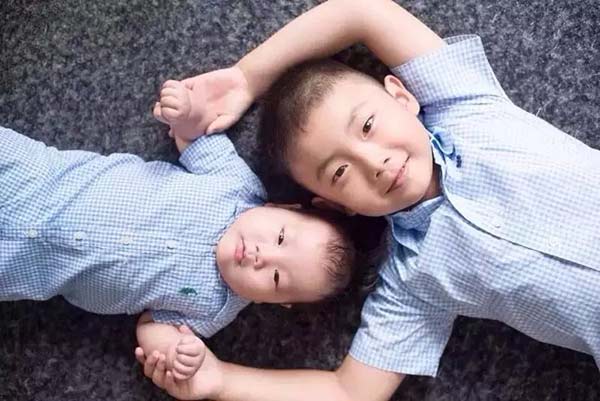Hospitals in China's biggest cities are reporting an increase in women choosing natural childbirth, reversing a decadeslong trend during the one-child policy in which cesarean sections were favored.
|
 |
|
A boy with his younger brother. [Photo provided to chinadaily.com.cn] |
China's C-section rate is the highest in the world, with cesarean sections used in 47 percent of all births in 2013. The World Health Organization's recommended rate is less than 15 percent.
Limited to one child, especially in urban areas, women sought C-sections for their convenience and reduced risk to newborns, even though recovery times increased for mothers and surgery presented its own dangers. However, since the second-child policy started in January, women have been considering the risks associated with C-sections more carefully.
Liu Yuli, who is six months' pregnant, is among those planning a natural delivery. The 31-year-old Beijing resident is health conscious — she records her daily calorie intake, controls her diet carefully and takes a yoga class twice a week. She sees the precautions as necessary for an easier delivery in September and a potential second child in the future.
"Maintaining a balanced diet and not eating too much will prevent the baby from being overweight," she said. "And sufficient exercise makes a natural delivery easier."
Liu's older sister, who has a 3-year-old son, had an abortion last year after the fetus became embedded in the scar tissue from her previous caesarean.
"It's a painful experience, both physically and mentally. Many women like us are willing to have one more child. A natural delivery is good for mother and baby, and can also reduce the risks of a life-threatening pregnancy, so I will try," Liu said.
The government introduced new exceptions to the one-child policy in late 2013, although they varied from region to region. Since Jan 1, all couples have been allowed to have a second child, and the number of cesarean sections has dropped.
At Sun Yat-sen University's First Affiliated Hospital in Guangzhou, Guangdong province, the C-section rate was 40 percent during the first three months of the year, a reduction of 10 percent from last year.
At Shanghai First Maternity and Infant Hospital, one of the country's major maternity hospitals, where 25,000 women gave birth in 2014, the C-section rate also dropped to about 40 percent last year. A decade ago, the rate was 70 percent.
In Beijing, the C-section rate dropped slightly, from 46.4 percent in 2013 to 46.2 percent in 2014, according to the Beijing Health and Family Planning Commission. The rate for the first quarter of this year was unavailable.
Sam Liu, chair of obstetrics and gynecology at Beijing United Family Hospital, said doctors are among those encouraging pregnant women to choose natural childbirth. Compared with a natural delivery, C-section is more invasive, it takes longer for mothers to recover and brings higher risks of infection and other gynecological diseases, Liu said.
"A pregnant woman who had a C-section previously may have a risk of uterine rupture, although this is very rare," Liu said. "And once she has a C-section, it will be more challenging to deliver naturally next time."
Women who want a second child should try a natural delivery for the first birth if there is no compelling reason for a C-section, Liu said.
"Last year, more women who had C-sections previously went to the hospital and said they were willing to try a natural birth," Liu said, adding that more than 80 percent of these mothers delivered their second baby naturally.
Contact the writer at yangwanli@chinadaily.com.cn
